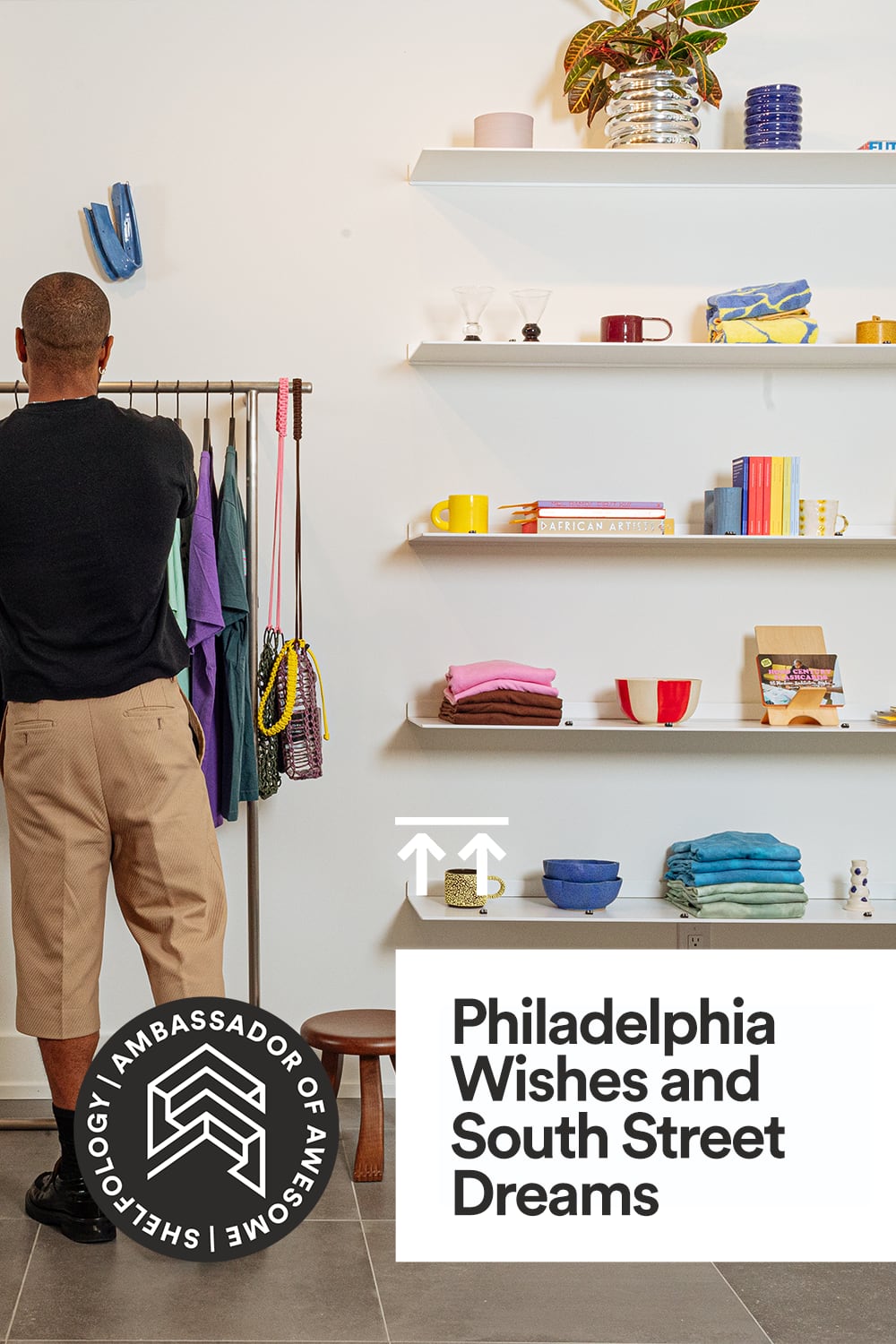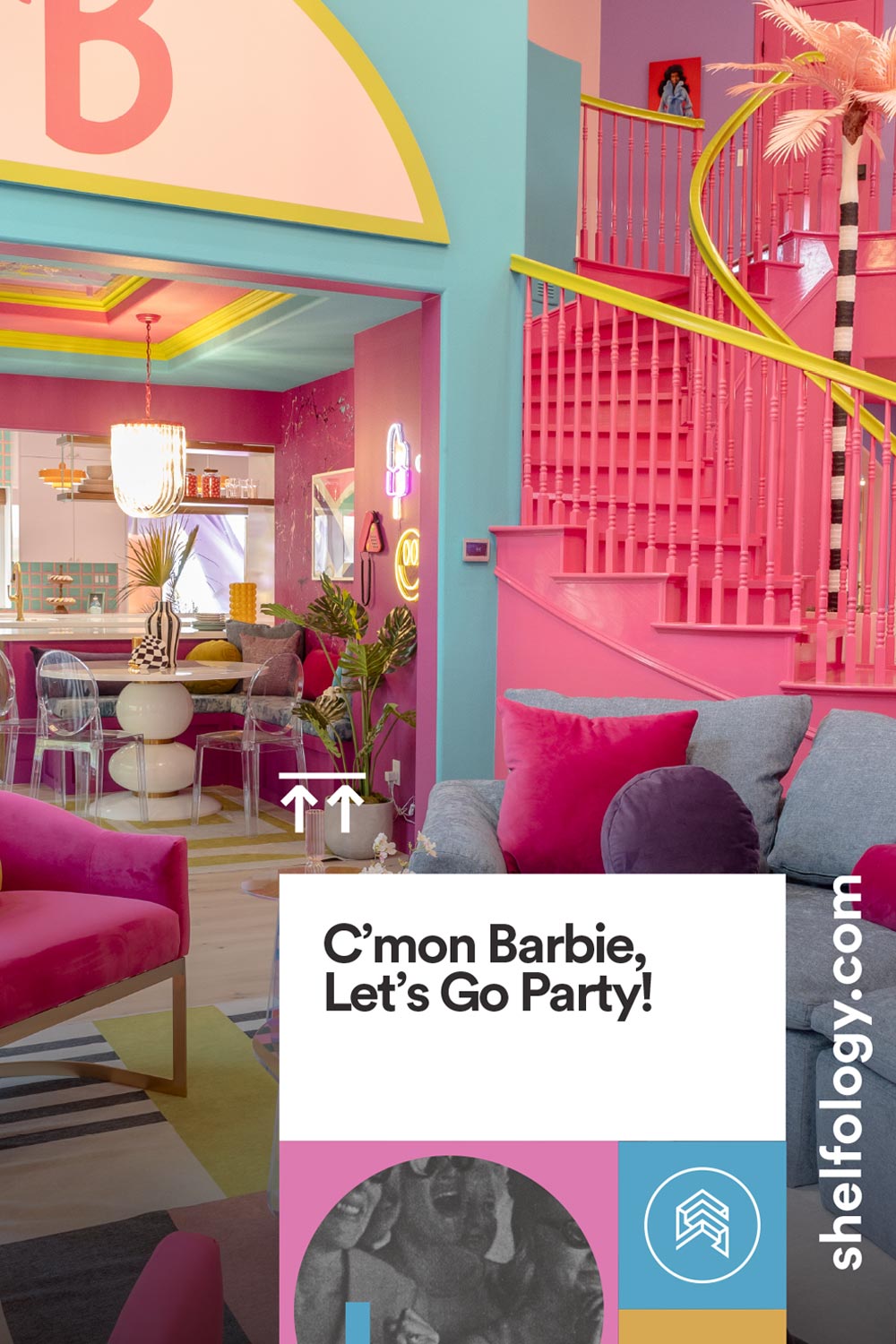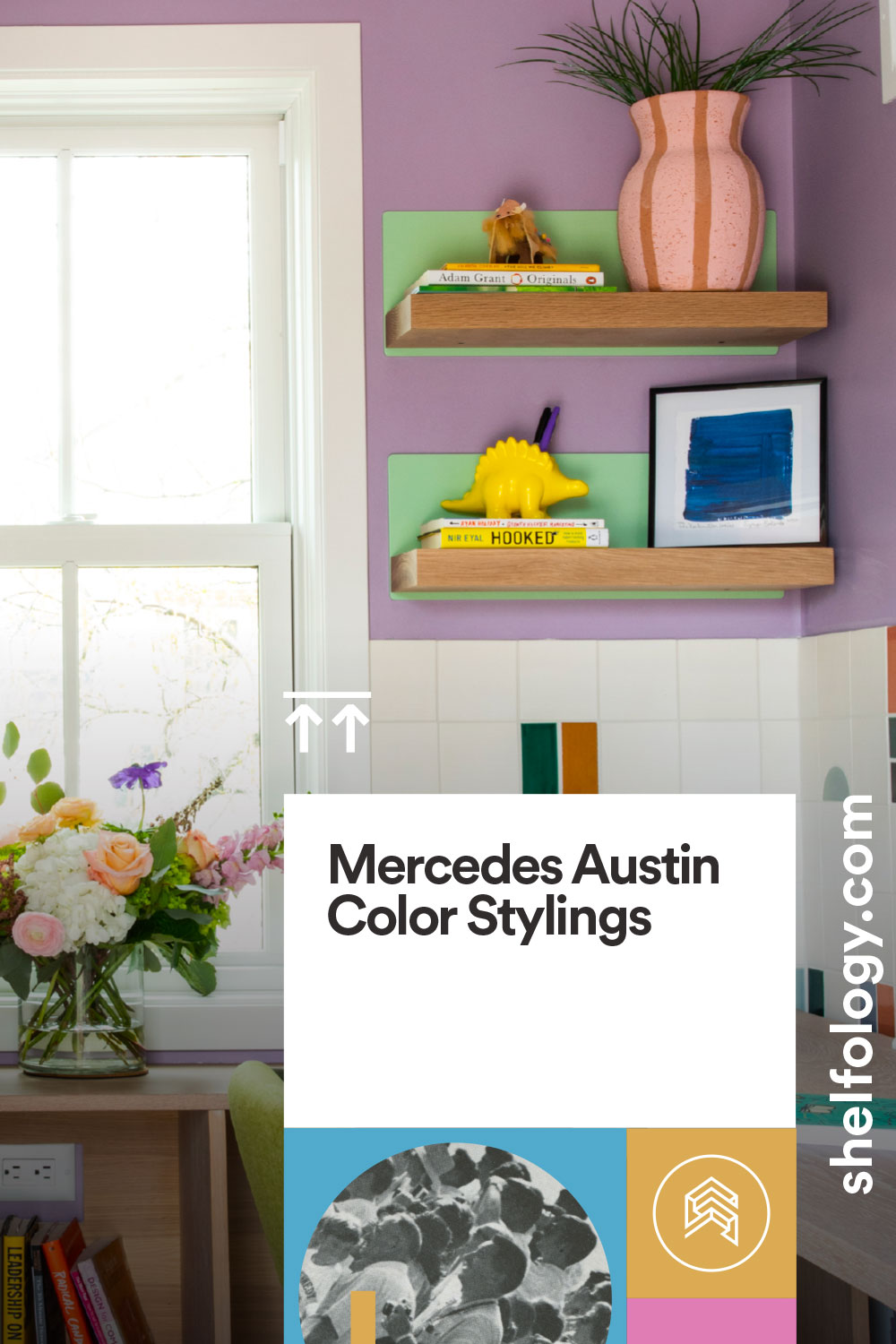Shelfology teamed up with husband and wife duo, Christina and Robert Martinez of the New Darlings blog as they planned their families' new airy and cool desert oasis. A year of southwest-inspired design later, and the stunning final results speak for themselves. Christina walks us through their planned storage and customized design using Shelfology’s flagship Aksel shelving in multiple spaces. Brava!
Time to take a look back at all of our open shelving moments, from design plans and construction to execution and styling. I have always been a fan of open shelving in our homes. Even back when we were renting, I found a way to have all of my favorite mementos, books and ceramics on display. Open shelving gives you an opportunity to have some of the beautiful pieces you've collected over the years out on display. Pieces for function become decor and show off a bit of your personality.
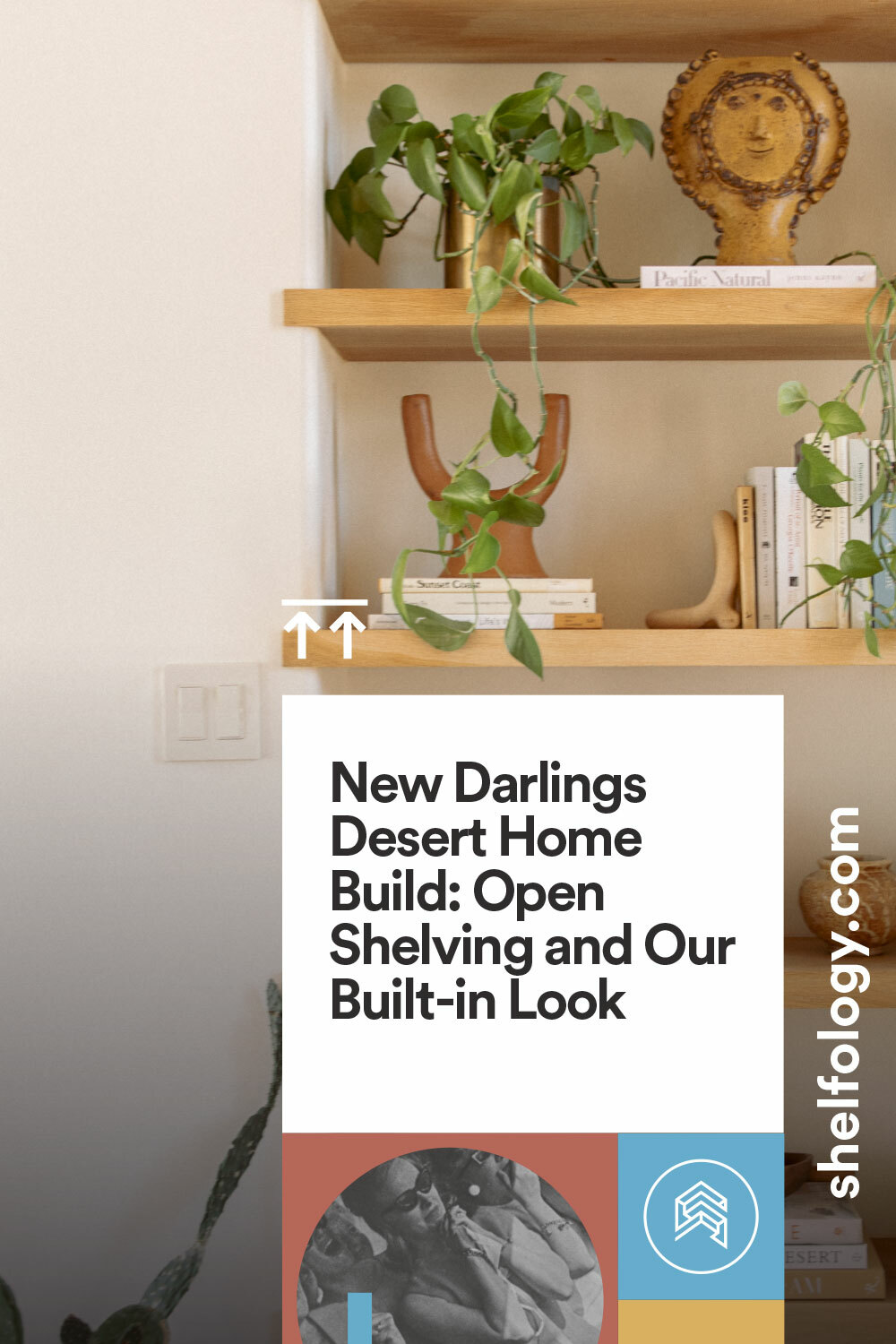
Why I Love Open Shelving
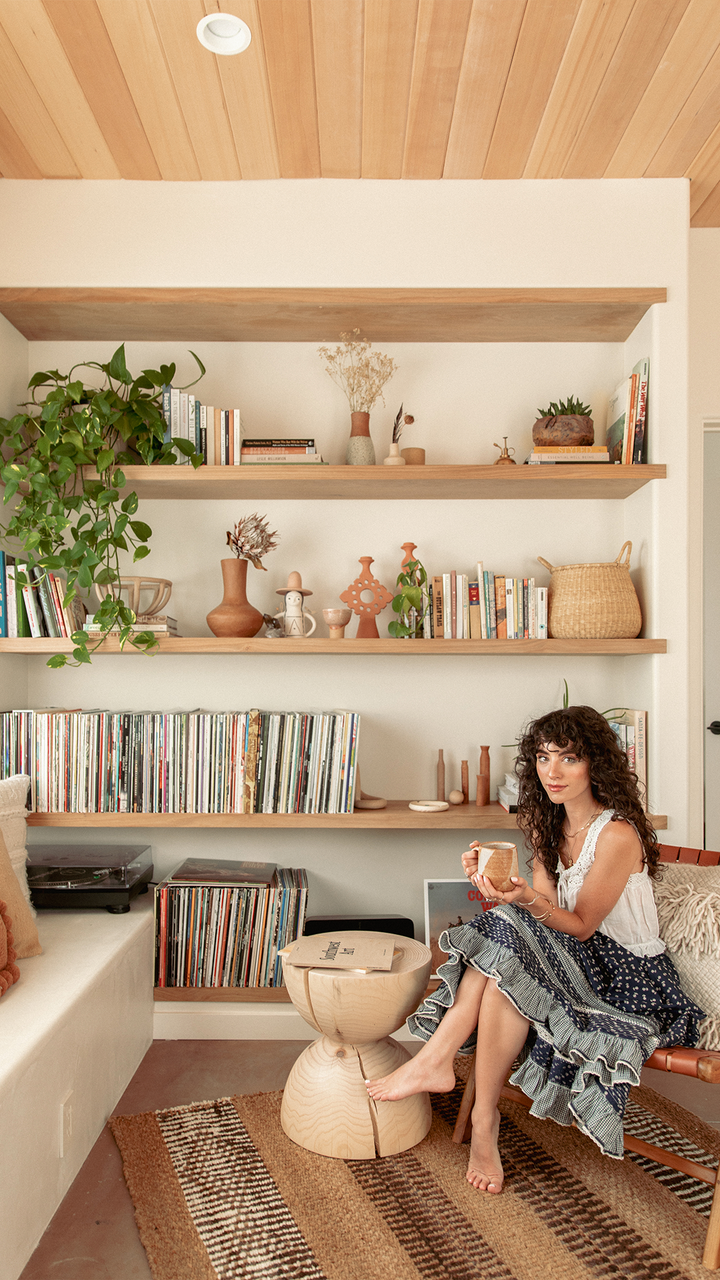
So where did we start? When designing this house, we knew we wanted to create special storytelling moments in each room of our home and that was something we really communicated to our architect. One of the reasons I love having shelving in other rooms other than the kitchen, like the living room for example, is because it almost becomes art within itself. It's easy to see there are a lot of natural materials used throughout our home: lime plaster, natural fiber textiles, and various woods that really help blur the lines of the indoor outdoor environment. We chose a clean slate with a creamy white paint on the walls and custom lime plaster which created some incredible depth, but we needed a bit of contrast and warmth. In came the Aksel floating shelves in White Oak from Shelfology.
How to Create Custom Open Shelving with Shelfology

Unless you're going custom with a cabinet maker, the idea of large open shelving can feel a bit daunting and it can also get quite expensive. When I learned about Shelfology's Ready to Hang Shelf Systems, I knew it was going to be the way to go for our shelving design. Their shelving is all solid hardwood—no plywood. On Shelfology's website you could easily select the shelf thickness, shelf length and depth, along with a satin finish or unfinished option. We went with the unfinished option and had our construction team use a matte seal to not change the look of the Aksel White Oak. I haven't seen so many options for length and depth anywhere else. This was super important to us, as the shelving in our reading nook/music room is almost 84" wide and we wanted to ensure they were deep enough to hold our record collection.
Reusing Scrap Materials when Creating Open Shelving
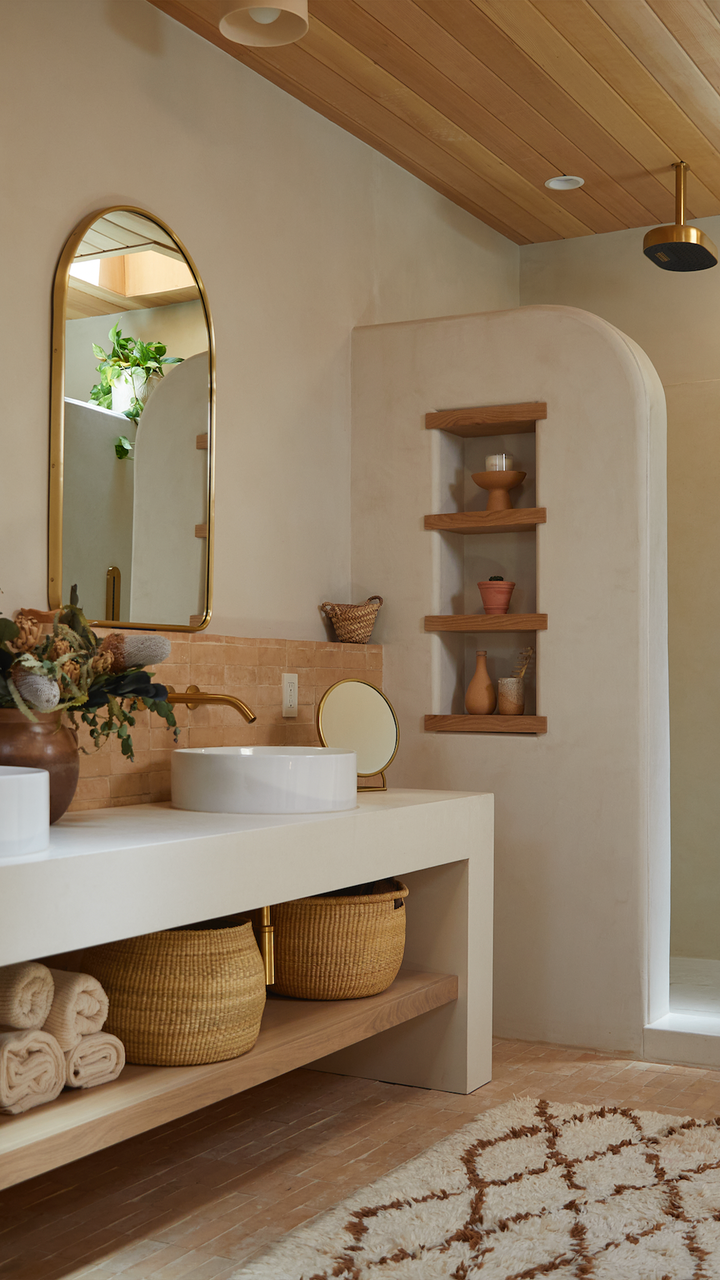
You may have noticed we have a unique design element throughout all the shelving in our home. That is what our design team called a "proud edge". When designing our Tucson home, I was really drawn to many old pueblos here in Tucson and Spanish-style homes in Santa Fe. I noticed all these homes had a similar design element with their shelving where the edge of the wood shelving didn't end at the side of the wall, it was built into the plaster and often extended out a bit (didn't lay flush to the wall). This was very common with the limestone blocks they were using back then, as well as with the clay. Although inspired by some adobes, our home is not an adobe so, there, we had to get creative how to create that look with the drywall niches we had carved out. We were able to slide on the Aksel shelves easily with their wall mount metal brackets. Then to create the "proud edge" look, we used scrap material from their warehouse which measured about an inch longer on each side than the shelf. That scrap material was added to the front to finish the look. I loved being able to give the scrap materials another life and see them used in this design.
Tips for Styling Your Open Shelving

You might have seen the open shelving in our reading nook/music room, or on a smaller scale in our bathroom. No matter the size, I always follow a similar formula for styling shelves. Begin with anchor pieces. These are your largest pieces: typically larger books you may place horizontally or trays for trinkets. Next, add in any decorative objects or artwork you would display vertically. I love resting framed art behind a shallow stack of books or placing a larger ceramic piece next to or atop some books. Lastly, any smaller bowls or candles. When using the same colors or similar shaped vessels, be sure to use a zig zag technique.
A good example of this method is in our living room shelving seen above. The top shelf has a large ceramic vessel on the right, then on the left on the second shelf. A similar colored vessel on the right on the third shelf and so on. You can also see the mix of the vertical and horizontal stacked books.
Get the Look with Shelfology Below:
Robert and Christina Martinez are the husband-and-wife duo behind the lifestyle and design blog New Darlings. Since 2013, they've been documenting their life in the Southwest and refining their personal style. Follow along for snapshots into slow living, organic design, style finds and peaceful interiors. Follow them on IG @newdarlings



